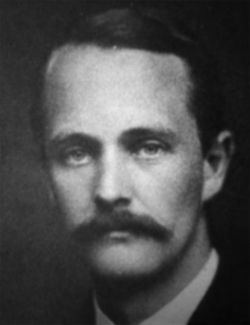The Text was derived from Mr. Biot Edmondston's memory of a ballad sung to him by an old man in Unst, Shetland. In the version sung, he notes, there were no stanzas to fill the obvious gap in the story after the first; but that after the fourth and the eighth stanzas, there had been certain verses which he had forgotten. In the first instance, these related that the lady had been carried off by fairies, and that the king, going in search of her, saw her one day among a company that passed into a castle on the hillside. After the eighth stanza, the ballad related that a messenger appeared behind the grey stone, and invited the king in.
The refrain is a startling instance of phonetic tradition, the words being repeated by rote long after the sense has been forgotten. It appears that the two lines are Unst pronunciation of Danish, and that they mean, respectively, 'Early green's the wood,' and 'Where the hart goes yearly.'
In this connection, compare Arthur Edmondston's A View of the Ancient and Present State of the Zetland Islands (1809), vol. i. p. 142: 'The island of Unst was its [pure Norse] last abode; and not more than thirty years ago several individuals there could speak it fluently.' See also Rev. Dr. Barry's History of the Orkney Islands (1805), Appendix No. X., pp. 484-490, a ballad of thirty-five quatrains in Norse as spoken in the Orkneys, the subject of which is a contest between a King of Norway and an Earl of Orkney, who had married the King's daughter, in her father's absence, and without his consent.
The Story.--Doubtless few will recognise in this fragment an offshoot of the classical story of Orpheus and Eurydice. The ballad, however, cannot be said to be derived directly from the classical tale: rather it represents the débris of the mediæval romance of Orfeo and Heurodis, where the kingdom of Faëry (see 4.1) replaces Hades, and the tale is given a happy ending by the recovery of Eurydice (for whom the Lady Isabel is here the substitute). The romance exists as Orfeo and Heurodis in the Auchinleck MS., of the fourteenth century, in the Advocates' Library, Edinburgh; as Kyng Orfew in Ashmole MS. 61, of the fifteenth century; and as Sir Orpheo in Harleian MS. 3810.
KING ORFEO
1.
Der lived a king inta da aste,
Scowan ürla grün
Der lived a lady in da wast.
Whar giorten han grün oarlac
2.
Dis king he has a huntin' gaen,
He's left his Lady Isabel alane.
3.
'Oh I wis ye'd never gaen away,
For at your hame is döl an' wae.
4.
'For da king o' Ferrie we his daert,
Has pierced your lady to da hert.'
*** *** ***
5.
And aifter dem da king has gaen,
But whan he cam it was a grey stane.
6.
Dan he took oot his pipes ta play,
Bit sair his hert wi' döl an' wae.
7.
And first he played da notes o' noy,
An' dan he played da notes o' joy.
8.
An' dan he played da göd gabber reel,
Dat meicht ha' made a sick hert hale.
*** *** ***
9.
'Noo come ye in inta wir ha',
An' come ye in among wis a'.'
10.
Now he's gaen in inta der ha',
An' he's gaen in among dem a'.
11.
Dan he took out his pipes to play,
Bit sair his hert wi' döl an' wae.
12.
An' first he played da notes o' noy,
An' dan he played da notes o' joy.
13.
An' dan he played da göd gabber reel,
Dat meicht ha' made a sick hert hale.
14.
'Noo tell to us what ye will hae:
What sall we gie you for your play?'
15.
'What I will hae I will you tell,
And dat's me Lady Isabel.'
16.
'Yees tak your lady, an' yees gaeng hame,
An' yees be king ower a' your ain.'
17.
He's taen his lady, an' he's gaen hame,
An' noo he's king ower a' his ain.
King Orfeo
Frank Sidgwick
Suggested Poems
Explore a curated selection of verses that share themes, styles, and emotional resonance with the poem you've just read.
